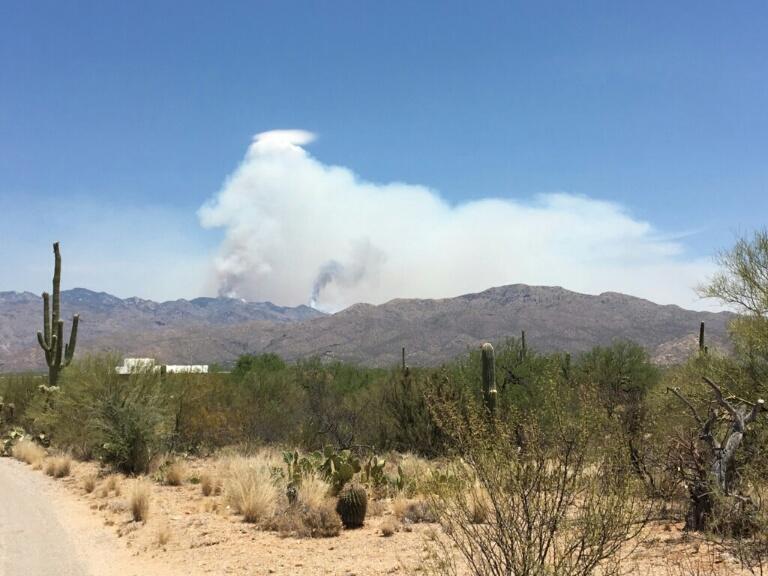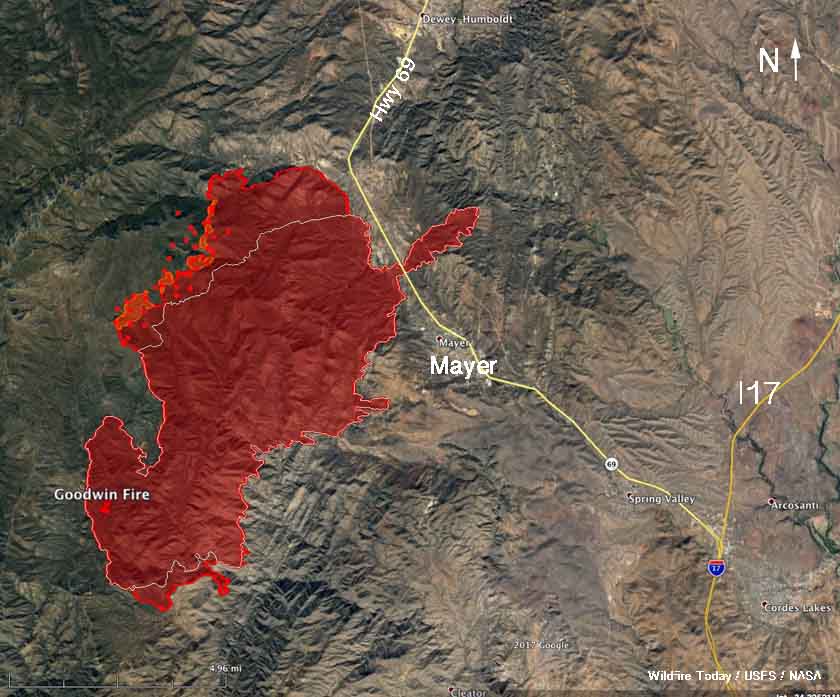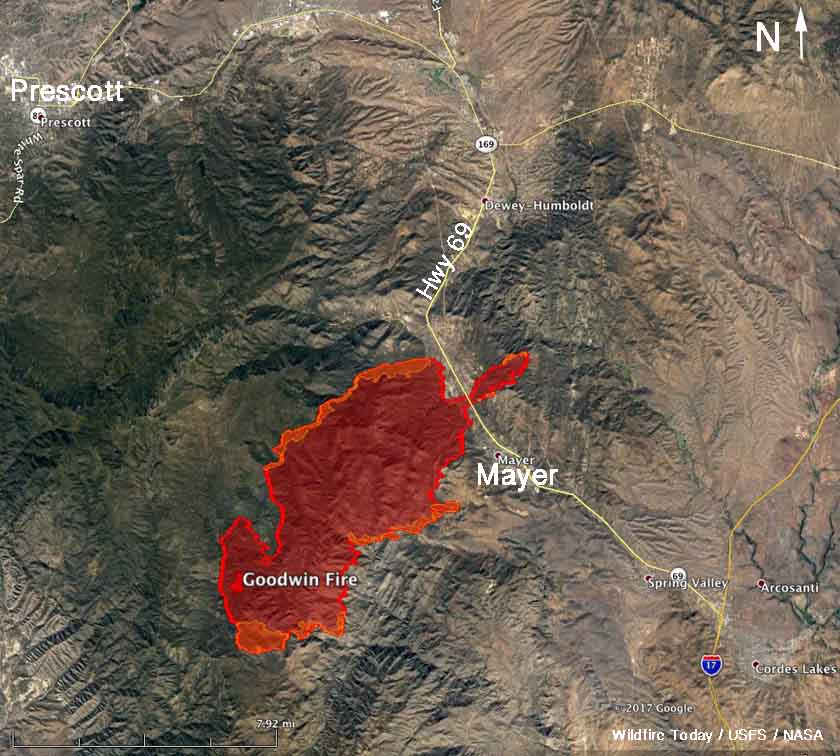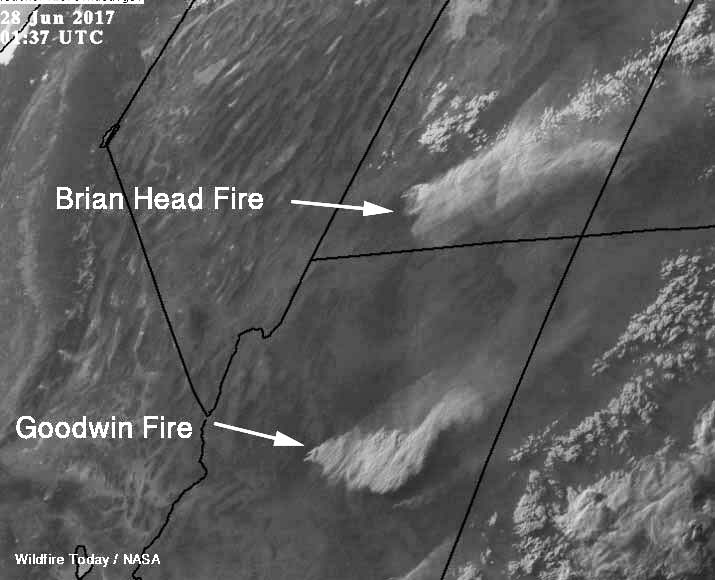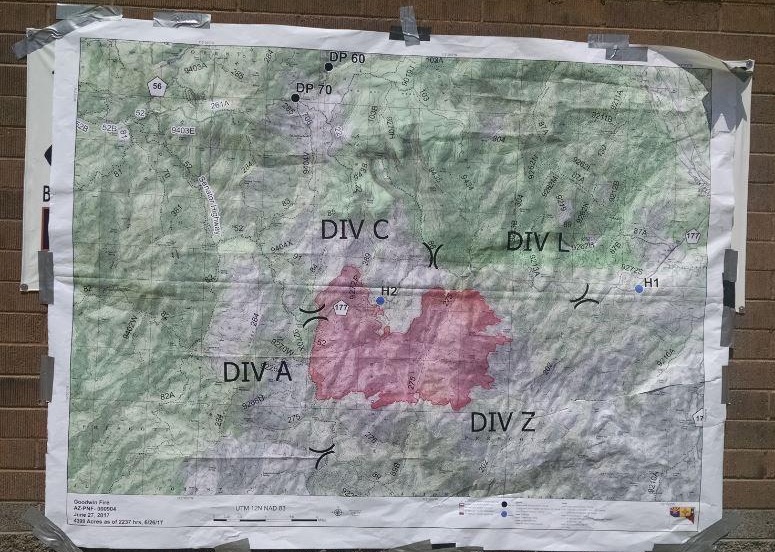Above: Map of the perimeter of the Burro Fire. The red line was current at 11 pm MDT July 3, 2017. The white line was from 26 hours earlier.
(Originally published at 8:15 a.m. MDT July 4, 2017)
(Updated at 10:06 a.m. MDT July 4, 2017)
The Burro Fire on Monday expanded by another 7,770 acres to bring the total area burned up to 19,057 acres. It grew on the north side by about 1.5 miles and by 2. 5 miles on the south, but on the west side it is not much closer to the Catalina (Mt. Lemmon) Highway than it was Monday morning and is still more than a mile away. It is still about four miles from the northeastern outskirts of Tucson.
Firefighters are working on indirect firelines and protecting structures along the Catalina (Mt. Lemmon) Highway on the west side. On the south firefighters continued preparations along Redington Pass Road in case they need to protect or fire out from the road. Natural barriers are also being used to aid in suppression efforts.
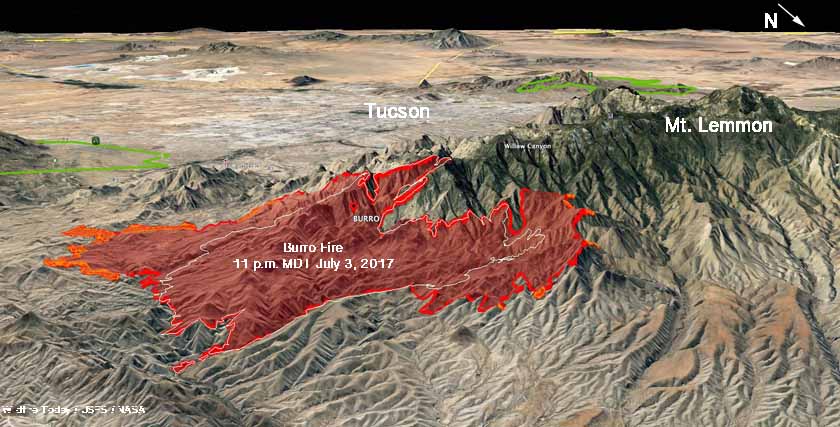
On the lower slopes the fire is burning in tall grass and brush, with Ponderosa Pine and mixed conifer at the higher elevations. The fire covers an area ranging from 3,000 to 7,000 feet above sea level.
Airtankers and helicopters were used Monday to help delay the fire’s spread. With the high temperatures expected on Tuesday, the use of aircraft may be limited if it becomes too hot to fly as the density altitude becomes a problem.
The temperatures Tuesday will vary widely with the elevation. At 4,000′ the temperature should reach 100 degrees in mid-afternoon with 14 percent relative humidity and 10 mph winds out of the northwest gusting to 17. Higher up the mountain at 7,600′ the high will be 81, with 22 percent relative humidity and northwest winds at 10 with gusts to 15. Similar conditions are in the forecast for the rest of this week.
There is a chance of isolated thunderstorms Tuesday which could bring troublesome strong, erratic winds.
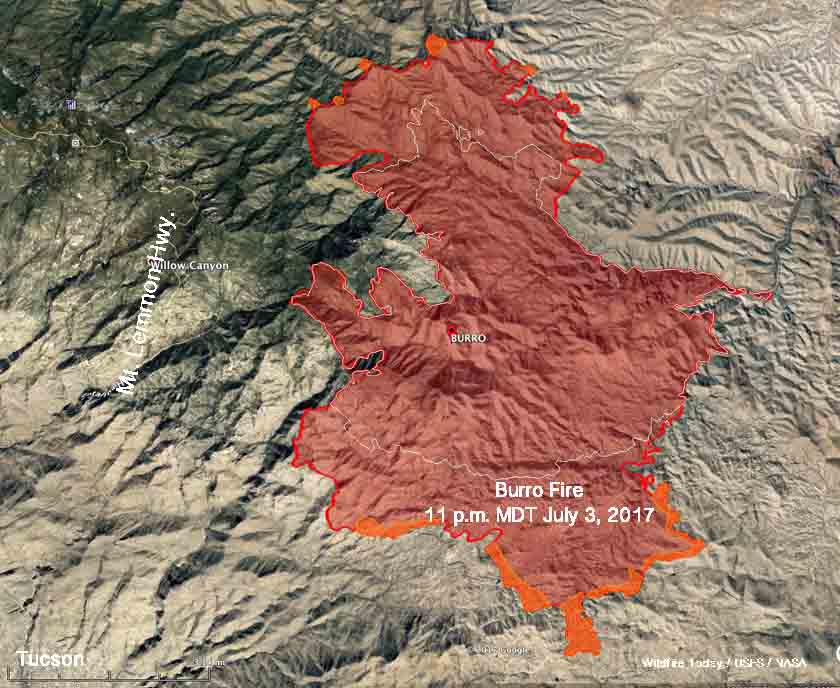
An evacuation order is in effect for all residents along the Catalina (Mt. Lemmon) Highway from Mile Marker 0, to Summer Haven. The highway is closed. No public, including residents, will be allowed access into the area. The Redington Pass Road is closed between Mile Marker 2 and 14.
Pyrocumulus clouds from the #BurroFire. View from Casa de Beamish in Oro Valley. #azwx #KVOAwx pic.twitter.com/rxqv1oKife
— Jeff Beamish (@jeffbeamish) July 4, 2017




